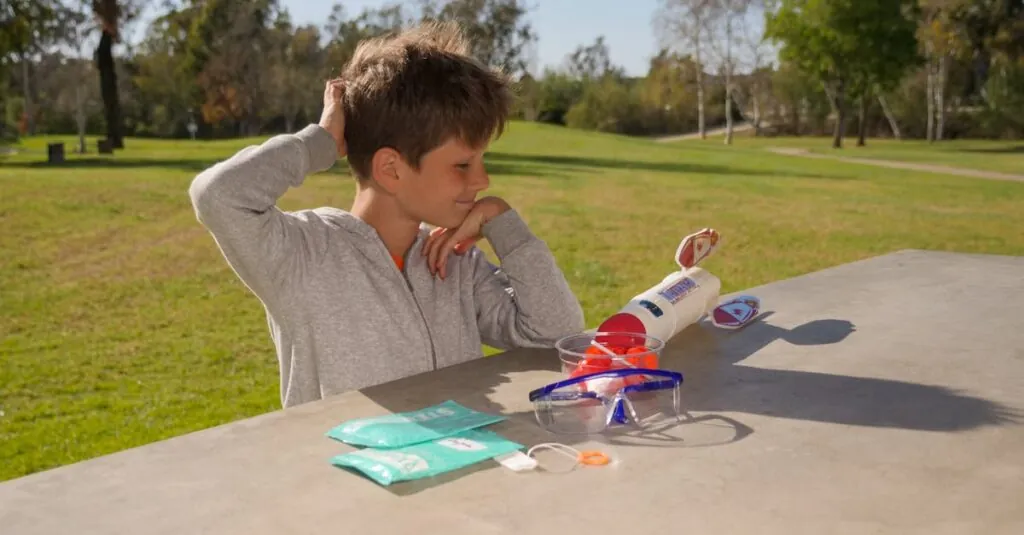In a world where kids are glued to screens, it’s time to turn that screen time into something productive and fun. Technology activities for kids can spark creativity and ignite a passion for learning, all while keeping them entertained. Imagine your little ones coding their first game or building a robot that can actually fetch snacks—now that’s a win-win!
Table of Contents
ToggleOverview of Technology Activities for Kids
Technology activities for kids play a crucial role in their development. These activities not only keep children engaged but also enhance skills like problem-solving and critical thinking. Coding games offer an interactive way to learn programming languages while fostering logical reasoning.
Building robots serves as another engaging technology activity. Kids can explore engineering concepts and creativity by constructing functional models. Robotics kits often provide step-by-step instructions, making these projects accessible.
Digital art programs allow children to express their creativity. Through these applications, they can experiment with color, design, and composition. Video editing tools also give kids the opportunity to create and share their unique stories.
Interactive learning platforms offer comprehensive educational content. These platforms often include subjects like math, science, and history in a fun, gamified format. As children engage with these resources, they develop a love for learning that extends beyond traditional classroom settings.
Developing apps can spark an interest in technology. By guiding children through the app creation process, they learn design principles and coding basics. Workshops and online courses facilitate this learning experience, providing valuable skills for the future.
In addition, participating in online coding competitions fosters a sense of community. While competing, children connect with peers who share similar interests. This interaction can motivate them to delve deeper into technology-related fields and further their skills.
Benefits of Technology Activities
Engaging in technology activities offers numerous advantages for children’s development. These activities not only provide entertainment but also support essential skills.
Enhancing Creativity
Technology activities stimulate children’s imagination. Digital art programs allow kids to create vibrant artwork using various tools. Video editing software encourages them to produce engaging stories, combining visuals and sound. Robotics fosters creativity by enabling children to design and build their own robots. Interactive platforms challenge kids to invent games or applications, pushing the boundaries of their creativity. Each of these activities encourages self-expression and artistic development, allowing children to showcase their unique ideas.
Improving Problem-Solving Skills
Children enhance their problem-solving abilities through technology activities. Coding games present puzzles that require logical thinking and strategic planning. Robotics projects involve troubleshooting mechanical issues, which sharpens analytical skills. By participating in online coding competitions, kids face real-world challenges that demand quick thinking. These experiences build resilience, as children learn to overcome obstacles while pursuing solutions. Engaging in technology tasks fosters a mindset of exploration, equipping them with tools to tackle challenges effectively.
Popular Technology Activities for Kids
Kids can explore numerous engaging technology activities that not only entertain but also foster development. Two notable categories include coding games and robotics projects.
Coding Games and Apps
Coding games and apps provide an interactive way for kids to learn programming principles. Platforms like Scratch or Code.org offer user-friendly environments where children can create animations and games. Concepts like loops and conditionals become easier to grasp through fun challenges. Engaging with these platforms enhances logical thinking while encouraging creativity. With immediate feedback, kids can solve problems and refine their coding skills. Many games also incorporate storytelling elements, making learning feel less formal and more enjoyable.
Robotics and Engineering Projects
Robotics and engineering projects expose kids to design and construction principles. Building simple robots using kits like LEGO Mindstorms sparks interest in engineering concepts. Projects often include programming the robot to perform specific tasks, blending creativity with technical skills. Frequent hands-on challenges promote critical thinking and teamwork, where children collaborate on projects. Various competitions allow kids to showcase their creations, further motivating them. Exploring robotics cultivates resilience, as they troubleshoot issues encountered during building and programming phases.
Safety and Screen Time Considerations
Balancing technology use with safety is essential for children’s well-being. Technology activities can be enjoyable yet demanding oversight in screen time and online safety.
Setting Limits on Screen Time
Establishing firm boundaries on screen time promotes healthy habits. The American Academy of Pediatrics recommends that children aged 2 to 5 engage in no more than one hour of high-quality programming daily. Monitoring usage helps prevent excessive exposure to screens. Parents should create tech-free zones, like mealtime or bedtime, encouraging family interaction and reducing distractions. Regular breaks during long sessions allow for physical activity and decreases eye strain. Scheduling specific times for technology activities can enhance focus on educational and creative engagement while maintaining balance with other life aspects.
Ensuring Online Safety
Keeping kids safe online requires proactive measures. Educating children about privacy and the importance of not sharing personal details fosters responsible behavior. Utilizing parental controls on devices prevents exposure to inappropriate content and allows monitoring of online activity. Regular communication about online interactions encourages kids to discuss any uncomfortable situations they encounter. Encouraging them to engage in age-appropriate platforms helps them navigate the digital world safely, while exploring technology activities together strengthens trust. Promote awareness of safe online practices, making it easier for children to enjoy technology responsibly.
Tips for Parents to Engage Kids
Engagement in technology activities starts with curiosity. Foster interest by showcasing the exciting results of completing projects. Encourage children to share their progress with friends, creating a sense of accomplishment.
Create a balanced approach to screen time. Set specific hours for technology activities that align with recommendations from the American Academy of Pediatrics. Integrate tech-free zones in the home to promote healthy habits away from screens.
Make learning a social experience by arranging group activities. Organize playdates or workshops focused on coding games and robotics. Children thrive on collaboration and sharing their challenges with peers.
Utilize resources like online tutorials or local STEM programs. Engaging with community resources can provide hands-on experiences. Explore digital art classes or robotics competitions that challenge children creatively and intellectually.
Incorporate technology into everyday tasks. Simple activities, like creating a family website, can spark interest in web design. Cooking with apps that teach measurement and proportions emphasizes the fun side of learning technology.
Discuss online safety regularly. Talk openly about privacy, encouraging children to ask questions when they’re unsure. Implement parental controls and guide children in navigating digital platforms wisely.
Celebrate milestones, regardless of size. Recognizing efforts in completing projects builds confidence and motivates future learning. Offering constructive feedback helps develop problem-solving skills that are crucial in technology activities.
Engaging kids in technology activities is a powerful way to enhance their learning and development. These activities not only entertain but also cultivate essential skills that will benefit them in the future. By exploring coding, robotics, and digital creativity, children can foster a love for technology while developing critical thinking and problem-solving abilities.
Parents play a crucial role in guiding their children through these activities. By promoting a balanced approach to screen time and ensuring safety, they can help kids navigate the digital landscape responsibly. The journey into technology can be both fun and educational, setting the stage for lifelong learning and creativity. Embracing these opportunities can truly make a difference in a child’s growth and confidence.



